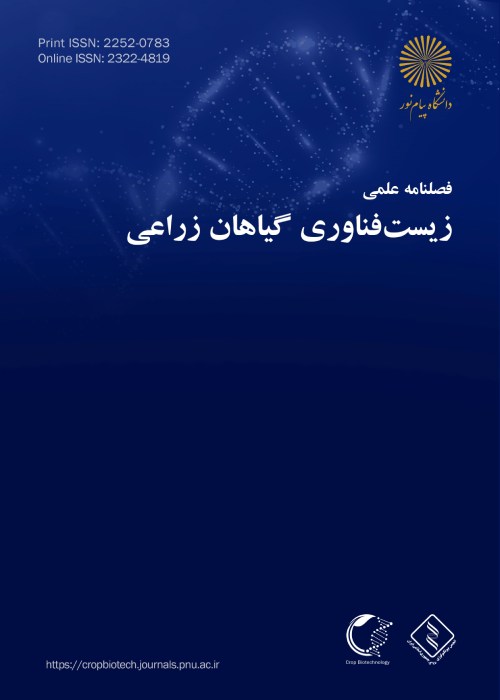Application of Genomic and Unigene-based Microsatellite markers in Conservation and Management of Genetic Resources of Some Iranian Crops
Author(s):
Abstract:
Today with appropriate understanding of economical، ecological، cultural and social importance of biodiversity، significant progresses have been made toward identification، quantification، finding distribution patterns and genetic relationships of this diversity. In addition، analysis of genetic variation of various aspects such as distribution of allelic diversity، genetic structure and kinship relationships between and within populations، individuals and species is one of the main concerns in biological sciences. In this regard، and with respect to the importance of identification، preservation and maintenance of these genetic pools، to ensure the permanent existence of them and using those resources as a tool for facilitating management strategies and breeding processes، the efficiency of some different genetic and genomic methods including genome and transcriptome based microsatellites have been evaluated in some crop plants، i. e. saffron، and some species belonging to genus Prunus and Punica. Through the development of different molecular markers used in the above-mentioned studies، genome-based microsatellite markers have significantly improved our knowledge on the processes related to habitat segmentation and small populations، distribution of allelic diversity، patterns of germplasm management and finally genetic relationships in the field of genetic conservation. Recently، availability of next generation sequencing tools provided access to huge amount of transcriptomic and genomic sequences. This has allowed us to، a) investigate the diversity of gene functions caused by habitat segmentation، b) assess diversity of responses to biotic and abiotic stresses as well as environmental changes and، c) identify suitable markers to be used in studies such as marker-assisted selection. Here we discuss how the integration of genomic and transcriptomic variations backed up with new bioinformatic tools could improve the identification of relative influences of genetic and environmental threats and open up new frontiers in conservation studies.
Keywords:
Language:
Persian
Published:
Journal of Crop Biotechnology, Volume:3 Issue: 4, 2013
Pages:
133 to 148
magiran.com/p1190110
دانلود و مطالعه متن این مقاله با یکی از روشهای زیر امکان پذیر است:
اشتراک شخصی
با عضویت و پرداخت آنلاین حق اشتراک یکساله به مبلغ 1,390,000ريال میتوانید 70 عنوان مطلب دانلود کنید!
اشتراک سازمانی
به کتابخانه دانشگاه یا محل کار خود پیشنهاد کنید تا اشتراک سازمانی این پایگاه را برای دسترسی نامحدود همه کاربران به متن مطالب تهیه نمایند!
توجه!
- حق عضویت دریافتی صرف حمایت از نشریات عضو و نگهداری، تکمیل و توسعه مگیران میشود.
- پرداخت حق اشتراک و دانلود مقالات اجازه بازنشر آن در سایر رسانههای چاپی و دیجیتال را به کاربر نمیدهد.
In order to view content subscription is required
Personal subscription
Subscribe magiran.com for 70 € euros via PayPal and download 70 articles during a year.
Organization subscription
Please contact us to subscribe your university or library for unlimited access!


